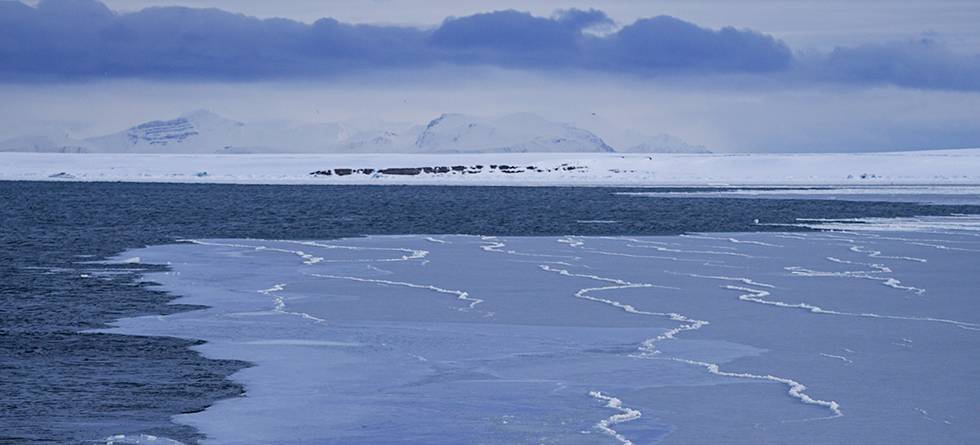With global warming, temperatures rise faster in the Arctic than in the rest of the world. This has already been observed. At the same time, since the late 1990s, the continents south of the Arctic seas, in Europe, Asia and North America, have seen unusually cold winters.
So far there is no consensus as to whether these clusters of cold winters are caused by climate change in the Arctic. Though statistical correlations between sea ice loss in the Arctic and Eurasian winter temperatures have been identified, statistics alone cannot prove causal relations.
To be able to predict future winters, the mechanisms behind the potential relationship must be known.
“The atmosphere is chaotic, noisy and difficult – perhaps impossible – to predict,” says Shengping He.
He is a researcher at the Geophysical Institute at the University of Bergen, the Nansen Environmental and Remote Sensing Center, and the Bjerknes Centre.

Predictions in the range between weather forecasts and climate projections have lately become an important field of research. An example of such a prediction may be the probability that a winter or a decade will be warmer or colder than normal.
Together with colleagues from several Norwegian and Chinese research institutions, He works to improve the scientific background for these predictions. Their recent study suggests that Arctic sea ice loss makes East Asia winters colder.
Less sea ice makes winters colder
The researchers used simulations from a climate model to investigate whether sea ice loss can cause cold winters in East Asia. With a model you can do what statistics cannot – alter the ice and see what happens. The model has been run, not once, but 500 times, providing views into various outcomes.
These simulations indicate that sea ice loss in the Arctic can contribute to colder winters in East Asia, though natural variations in the weather are a more powerful driver.
“The effect of sea ice may easily be overshadowed by internal variability,” says Shengping He.
“As a result, one study may show a result from sea ice, another not.”
Ice behind Arctic warming
Within the Arctic, as well, temperatures are influenced both by the sea ice conditions and changing weather. As opposed to in East Asia, the sea ice is the main contributor to the Arctic temperature. When the ice is gone, the cold winter air touches water that is much warmer, and the sea heats up the air above.
The most dramatic changes in the ice cover have occurred, and will continue to occur, during summer. But even though changes in the ice extent are smaller in winter, the winter ice also changes.
Large areas that become ice free during summer, will by New Year be covered with ice that has frozen during fall and winter, thinner than the ice that used to be there. Heat is easier transferred through thin ice, another factor that influences the exchange between the ocean and the atmosphere, with impacts within and beyond the Arctic.
Linked through the Siberian high
How less sea ice and a milder Arctic can influence the regions farther south, is unclear. Several mechanisms have been proposed, such as the warm Arctic weakening the jet stream, strengthening the Siberian high-pressure system or weakening the polar vortex and the winds in the stratosphere, more than 15 kilometers above the ground.
In Shengping He’s climate model simulations cold winter months are linked to the high-pressure system located over Siberia. More open water in the Arctic strengthens the high, pushing cold air from the north southward over East Asia.
Collaboration across the continent
Shengping He was one of the researchers who received funding through a call for Norwegian-Chinese cooperation on climate research, announced by the Research Council of Norway in 2021.
Five out of the eight approved projects were led by researchers from the Bjerknes Centre, through its partner institutions the University of Bergen, NORCE and Nansen Environmental and Remote Sensing Center.
This week more than a hundred climate scientists meet in Bergen to discuss their research.
Reference
He, S., Drange, H., Furevik, T., Wang, H., Fan, K., Graff, L.S., Orsolini, Y.: Relative Impacts of Sea Ice Loss and Atmospheric Internal Variability on the Winter Arctic to East Asian Surface Air Temperature Based on Large-Ensemble Simulations with NorESM2. Adv. Atmos. Sci. (2024). https://doi.org/10.1007/s00376-023-3006-9

